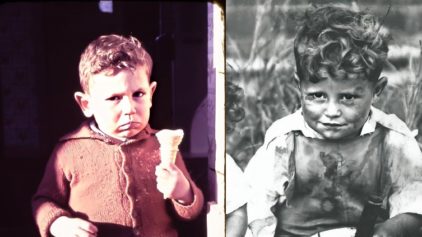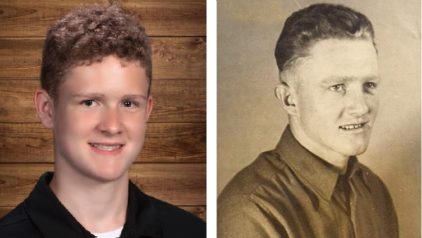It appears to skip generations along the paternal male line in my family i.e. myself, my grandfather, my 2nd great-grandfather were all fully bald by our 60’s. My mother’s father had only a slightly receding hairline but an otherwise full-head of hair in his late 60’s. Her grandfather appears to have a full head of hair in old photos.


If many of the older men in your family are distinguished by a shiny bald patch on their heads, their younger male relatives may be wondering if it’s only a matter of time for them, too. There’s a common claim that baldness is inherited from the mother’s father. How much truth is there in this claim?
Male Pattern Baldness
Most of the research that’s been conducted on hair loss has focused on male pattern baldness (MPB) as opposed to female pattern baldness. Maybe this is because the latter is less striking. Females don’t tend to develop completely bald patches — instead, their hair tends to thin.
Research shows that approximately 30% of males experience a degree of hair loss by the age of 30, 50% by the age of 50, and 80% by the age of 70 (Hamilton J.B., 1951).
Male pattern baldness usually begins with a receding hairline, most pronounced around the temples, and then with a small bald spot at the back of the head that eventually grows larger. At the end of the process, most men with MPB are left with only a small amount of hair behind the ears and at the back of the head in a kind of horseshoe pattern.
How Does Hair Grow, and Why Does It Stop?
Hair grows from a root, located at the bottom of the hair follicles on your scalp. It’s composed of proteins, mostly keratin, built by the various types of cells located in the follicle. As the cells add more proteins to the hair, it pushes out from the root and grows. The unique characteristics of the hair follicles determine the characteristics of hair, such as its color and whether it’s curly or straight.
A chemical derivative of testosterone called dihydrotestosterone (DHT) is responsible for the hair loss process. DHT causes the hair follicles to shrink, and the hair growing in those follicles thins and eventually falls out. The fact that DHT is derived from testosterone may explain why baldness is so much more common among men than among women.
DNA and Baldness
Several large-scale genetic studies (Hagenaars et al, 2017; Heilmann-Heimbach et al, 2017; Pirastu et al, 2017) have shown that DNA plays an important role in determining whether an individual will develop MBP. One of the genes associated with hair loss is the AR gene. This gene codes for a protein which helps hair follicles detect hormones that affect hair growth (such as testosterone), and it’s located on the X chromosome — a chromosome that biological males inherit from their mothers. This is probably the source of the claim that baldness is inherited from the mother’s father. After all, if the gene is on the X chromosome, and the X chromosome is inherited from the mother, it couldn’t have been inherited from the father, right?
Well, as with many things in genetics, it’s not as simple as that. One of the studies (Hagenaars et al, 2017) showed that MBP is a polygenic condition: a condition associated with numerous genetic variants, not just one. (Some of the conditions the MyHeritage DNA Health+Ancestry test looks for are polygenic conditions, such as heart disease and breast cancer.) Moreover, many of the genetic variants associated with MBP aren’t located on sex chromosomes — and Hagenaars’s study found that those ones more accurately predict whether someone will develop MBP than the ones located on sex chromosomes.
In other words, there is a little grain of truth to the claim that men inherit a tendency for baldness from their mothers’ fathers… but not a whole lot. There are many other factors that are more important when it comes to predicting whether a man will develop MBP.
Is there male pattern baldness in your family? Share your stories in the comments!











Ross
November 10, 2019
Maybe you can include it as a polygenic condition in your Health report?